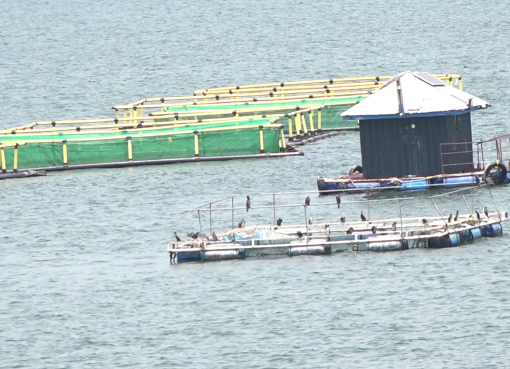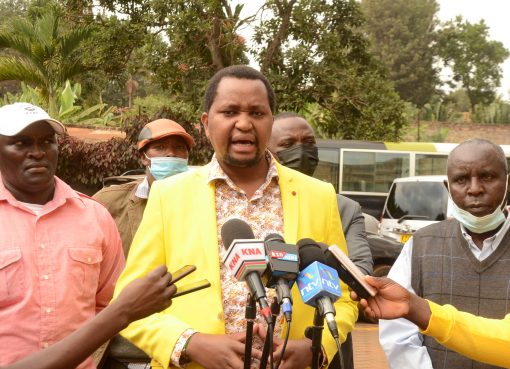The government will intensify its collaboration with conservation stakeholders and donor organizations as part of a cost-effective strategy aimed at streamlining activities and coordinated conservation actors to avoid duplication of roles in project areas.
Principal Secretary (PS) State Department of Wildlife Ms. Sylvia Museiya said proper mapping of areas using date-driven conservation models by the government will eliminate wasteful scenarios where many conservation actors converge in one project area carrying out related activities while other areas in need of critical intervention remain unattended to.

The PS was speaking at Lumo Community Conservancy in Mwatate on Saturday where she presided over a ceremony to hand over equipment worth millions to officials of conservancies in Tsavo and Amboseli landscapes.
The equipment donated included 23 motorbikes and four vehicles that will be used to enhance conservation activities and protection of biodiversity in the two regions.
“We need to work closely to avoid many conservation actors congregating in one area to carry out similar projects while leaving other areas unattended. We need to extend such projects to other areas where they will be needed,” she said.
She noted that conservancies had emerged as the new frontiers of conservation models where people and communities remained at the center of all operations. She added that training the conservancies’ officials on adoption of proper land-use management plans will strengthen the capacities of such communities to fully exploit the latent potential in conservancies.
The PS assured the conservancies that the government will offer support to advocate for mutually-beneficial coexistence between communities and wildlife.
She pointed out that the conservancies can diversify their revenue stream by tapping into available opportunities and this will boost communities’ ability to reap conservation benefits. She cited the issue of carbon trading which she said can earn the conservancies more money for community-empowerment projects.
Other officials present during the event were Taita-Taveta County Commissioner Loyford Kibaara, Governor Andrew Mwadime, Kenya Wildlife Service (KWS) Ag. Director General Dr. Erastus Kanga, International Fund for Animal Welfare (IFAW) President Azzedine Downes amongst other senior officials.
The project was funded by USAID and implemented through IFAW through the support of implementing partners including Big Life Foundation, Amboseli Ecosystem Trust, Tsavo Trust Foundation and Taita-Taveta Wildlife Conservancies Association (TTWCA).
Ag. DG KWS Dr. Kanga said conservancies were a critical part of protecting and promoting flourishing biodiversity outside the protected area.
Noting that conservancies had increased the area for wildlife by huge margins, Dr. Kanga admitted that the current drought has posed a significant threat to conservation strategies which called for adoption of new models of collaboration between KWS and conservancies.
He cited the challenge of dealing with drought-threatened livestock from conservancies being driven into national parks and other protected areas to avoid imminent death.
This, he said, presented a new problem as the law does not envisage a situation where livestock graze in the park.
“We have entered into a new territory that needs us to consult and work closely to come up with a workable plan on how to navigate the challenges posed by climate change without compromising the integrity of our biodiversity,” said the Ag. DG.
The chair of Amboseli Ecosystem Trust Board Mr. Daniel Leturesh called for amendment of conservation laws to allow livestock graze in the park during the times of great crises including ravaging droughts and unforeseen emergencies.
Mr. Leturesh pointed out the livestock-keeping communities had willingly converted their ranches into conservancies to give room to wildlife to roam and multiply. He added that the herders had allocated over half a million acres for conservation activities yet the government was unwilling to allow herders to graze their animals inside the park until the rains came.
The chair said the government should reciprocate the gesture and extend goodwill to livestock owners who were trying to save their remaining herds from dying as a result of the ravaging drought.
“We have allocated over half a million of our land to wildlife. Our livestock have died in their thousands and when we try to save the remaining by driving them into the park where there is some grass, we get arrested. That goes against the spirit of conservation,” he said.
Governor Andrew Mwadime said KWS should come up with a special grazing plan to be implemented in times of great distress like unprecedented drought to allow communities that had allocated their land for wildlife gain controlled access into protected areas.
He added that once the rains came back, the communities would drive their herds away from the parks back into conservancies.
“A special program to have controlled grazing to the park needs to be explored. The communities also need to be cushioned against total loss of their livestock from the drought,” he said.
The chair of Taita-Taveta Wildlife Conservancies Association Mr. Bongosa Mcharo asked KWS to ensure all illegal livestock were flushed from Tsavo national park to avoid cases of human-wildlife conflict in the community areas. He blamed the livestock keepers for pushing wildlife outside the park.
Dr. Kanga said KWS would not allow fattening of livestock export to be carried out in protected areas.
By Wagema Mwangi





